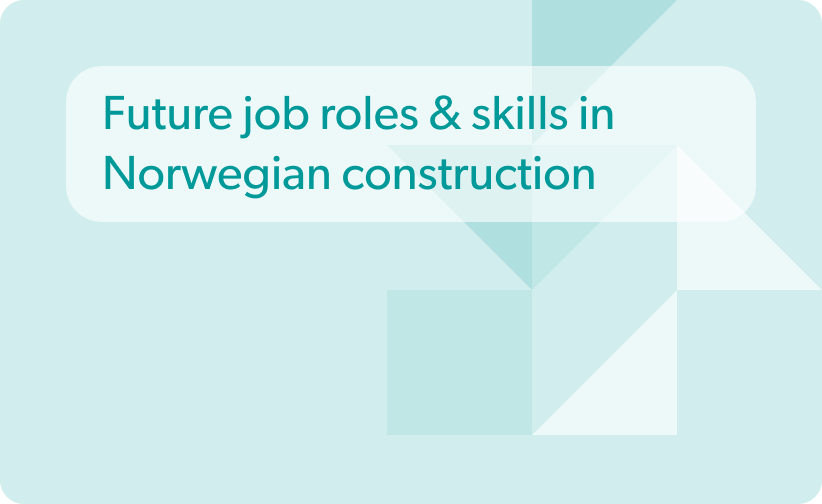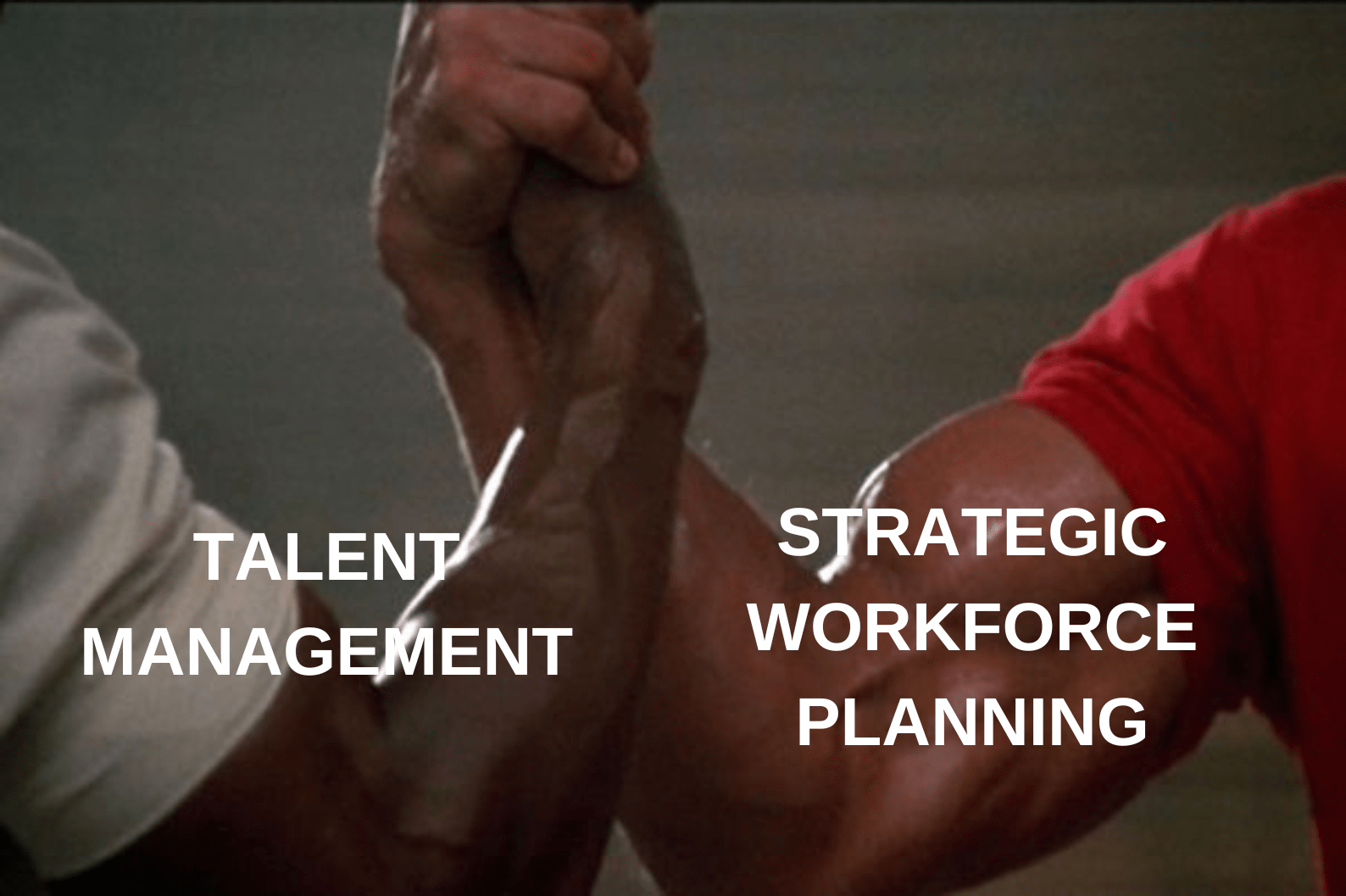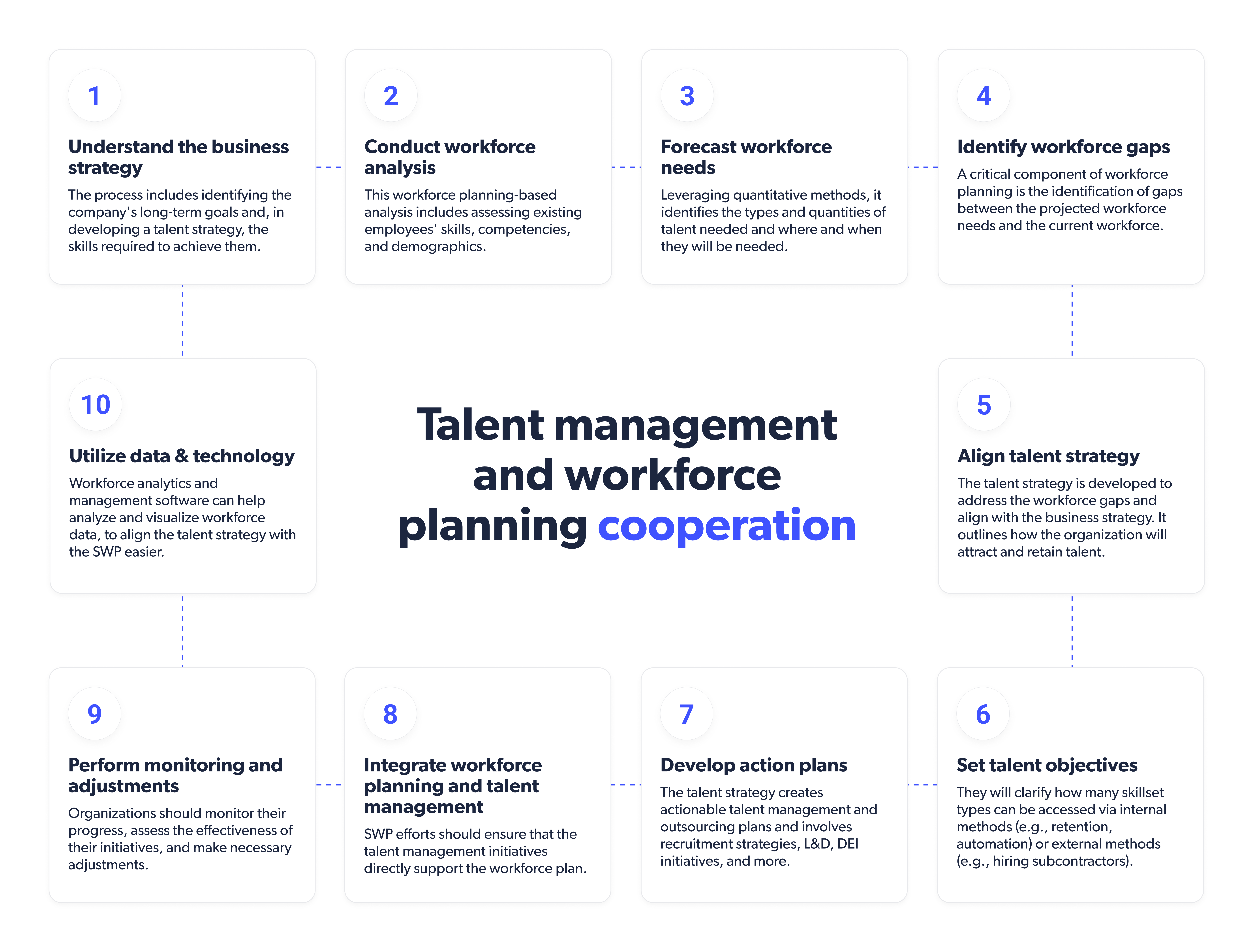Does the integration of talent management with strategic planning pay off?
Table of contents
Meet talent management (TM) and strategic workforce planning (SWP) — two pillars of organizational success.
Talent management, a vital HR process, focuses on acquiring and retaining qualified talent, ensuring employee engagement, and developing a culture where people can upskill and contribute optimally. It encompasses everything from effective onboarding to career development, emphasizing the value and potential of each employee within the company.
On the other hand, strategic workforce planning aligns an organization’s human capital with its long-term business goals. It systematically identifies the required workforce capabilities and ensures availability at the right time and place. SWP is instrumental in bridging the gap between the company’s strategic vision and the actual capabilities of its workforce.
Talent management and strategic workforce planning are powerful approaches to building, attracting, and retaining staff. Although both tactics have similar goals, the execution is very different. They create a strong workforce that can withstand economic and industry changes. Let’s consider how talent management and workforce planning cooperation affect the organization’s development.
Talent management in cooperation with other departments in the organization
Talent management is a vital aspect of organizational success, serving as a bridge between various departments to ensure optimal utilization of human resources. Let’s review the strategies and benefits of synergizing talent management across multiple organizational functions, highlighting the key role of cross-departmental collaboration in building an adaptable, innovative workforce ready for future challenges.
Talent management and finance department
The challenge for HR is that creating a staffing plan requires juggling a staggering amount of input. First, there are budget contributions from finance. In a typical organization, the finance department is responsible for setting spending or staffing limits for each department. Finance passes the ball to HR, and HR uses the expertise of its employees to refine the plan. However, despite a deep understanding of talent, HR needs help to create an effective plan. HR needs input from the departments they support, such as sales, marketing, and product, to better understand each department’s talent needs and timelines before creating an actionable plan.
The collaboration cannot stop once a plan is created. From the point of view of the execution of the plan, the game has only just begun. Once HR and finance have approved the plan and confirmed it meets the needs of their stakeholders and the company, the following key step is to provide the plan results to the HR team responsible for delivering its headcount targets.
Talent management and HR
As a crucial HR function, talent management involves a multifaceted approach to attract, retain, and develop skilled employees. HR professionals in talent management are tasked with identifying the organization’s present and future skill gaps and devising strategies to address them. This includes onboarding processes tailored to help new hires integrate smoothly into the company culture and understand their roles effectively. It also encompasses continuous employee engagement strategies to ensure current staff feel valued and supported. This support often translates into providing career development opportunities, like training and mentorship, to help employees grow within the company. Talent management is integral to maintaining a motivated workforce, contributing to the overall success and sustainability of the organization.
Talent management and workforce planning
Talent management helps ensure the company has the right people to succeed and grow.
Similarly, SWP is an organization’s systematic and forward-looking process to align its workforce with long-term business goals and objectives. It involves identifying the workforce’s capabilities, skills, and talents needed to support the organization’s strategic plans and ensuring these resources are available when needed.
Talent management and strategic workforce planning are the two main approaches companies use to ensure they have the right people in the right places to succeed when both teams work harmoniously together to achieve a common goal.
Talent management defines the requirements, and the SWP defines the details of achieving these goals.
Enhanced collaboration: The synergy of workforce planning and talent management
When these two methodologies coalesce, they forge an invaluable workforce that is productive, sustainable, and constantly striving for individual and organizational growth.
This partnership is pivotal in strategic development, especially pinpointing and responding to specific talent demands. These teams can identify specialized talent needs by working closely, forming the basis for targeted talent management strategies to bridge skill gaps. It includes recognizing talent shortages and developing action plans, a process that extends to subsidiaries and operational entities.
The role of a workforce planning manager is crucial in predicting talent gaps, which allows for strategic hiring plans.
This foresight helps evaluate recruitment capabilities and identify misalignment between theoretical plans and practical realities. By guiding recruiting teams, business leaders can focus on long-term goals, anticipating skill and staffing shortfalls.
It’s a blend of art and science.
This strategic guidance has shifted recruitment focus from simpler to more complex talent segments. This shift is based on informed predictions about future talent needs, enabling recruiters to adapt their strategies effectively.
The transition from theoretical workforce planning to practical implementation is evident in the rise of candidate relationship management. This evolution highlights the importance of maintaining talent pools for future hiring needs, reflecting how workforce planning data informs and refines recruitment strategies and helps save money in the organization by increasing ROI by 60% and reducing absenteeism by 40% (an opportunity for big savings).
Check the guide to cost-efficient business success
Staying ahead means working smarter, not harder. Check out the insider’s perspective, featuring tips, ideas, and best practices from seasoned executives and HR professionals.
How talent management is developed in conjunction with strategic workforce planning
Developing a talent strategy and strategic workforce planning are closely intertwined, as a talent strategy plays a vital role in supporting an organization’s workforce planning efforts. By developing a talent strategy integrated with SWP, organizations can ensure that their talent-related efforts are tightly aligned with the broader business objectives, enabling them to build a workforce capable of supporting and driving the organization’s success.
- Understand the business strategy. The process begins by deeply understanding the organization’s overarching business strategy and objectives. It includes identifying the company’s long-term goals and initiatives and, in developing a talent strategy, the skills and capabilities required to achieve them.
- Conduct workforce analysis. In parallel with understanding the business strategy, organizations analyze their current workforce. This workforce planning-based analysis includes assessing existing employees’ skills, competencies, and demographics.
- Forecast workforce needs. Strategic workforce planning involves predicting future workforce requirements based on the business strategy. Typically leveraging quantitative methods, it identifies the types and quantities of talent needed and where and when they will be needed.
- Identify workforce gaps. A critical component of workforce planning is the identification of gaps between the projected workforce needs and the current workforce. These gaps may include shortages of specific skills, succession planning needs, or demographic imbalances.
- Align talent strategy. The talent strategy is then developed to address the workforce gaps and align with the business strategy. It outlines how the organization will attract, access, develop, and retain talent using various methods and internal/external sources.
- Set talent objectives. The talent strategy sets specific objectives and goals, such as increasing recruitment efforts for particular skill sets, launching leadership development programs, or improving retention strategies. It clarifies how many skillset types can be accessed via internal methods (e.g., development, mobility, retention, automation) or external methods (e.g., hiring subcontractors, consultants, temporaries).
- Develop action plans. The talent strategy leads to creating actionable talent management and outsourcing plans and initiatives to bridge the identified gaps. These may involve recruitment strategies, training and development programs, performance management improvements, diversity and inclusion initiatives, and subcontracting tactics.
- Integrate workforce planning and talent management. The talent strategy and workforce planning efforts should be closely integrated to ensure that the organization’s talent management-related initiatives directly support the workforce plan. For example, if there’s a projected shortage of a particular skill, the strategy can include specific hiring, training, or outsourcing plans to address this gap.
- Perform monitoring and adjustments. Both the talent strategy and the workforce plan are iterative processes. Organizations must continuously monitor their progress, assess the effectiveness of their initiatives, and make necessary adjustments. As the business strategy evolves and external factors change, so should the talent strategy and workforce plan.
- Utilize data and technology. Data analytics and technology tools play a significant role in both processes. Workforce analytics and management software can help analyze and visualize workforce data, making aligning the talent strategy with the strategic workforce plan easier.
An example of collaboration between talent management and workforce planning teams at global insurance company XYZ
According to a LinkedIn Global Talent Trends 2022 report, companies that excel in internal mobility retain employees for an average of 5.4 years, compared to 2.9 years at companies that struggle with it.
These findings highlight the importance of strategic workforce planning in retaining top talent.
So, let’s create a use case with the XYZ company and how business leaders can understand the long-term needs and prepare for them today with the help of talent management and strategic workforce planning teams’ cooperation.
Example
In response to their strategic workforce planning insights, a leading technology company refocused its recruitment efforts towards advanced technological skills. This move, aimed at aligning with an AI and automation-driven future, not only enriched the company’s talent pool but also resulted in a remarkable 15% increase in productivity.
The strategic application of data within the organization serves multifaceted internal objectives. It is instrumental in managing career trajectories, fostering skill development, and enhancing talent mobility. This approach is a cornerstone of the organization’s overarching strategy, emphasizing the identification of future-critical talent segments. In their endeavor to grasp the global insurance industry’s core requirements, the strategic workforce planning team has meticulously identified 150 distinct talent segments spanning various roles, including HR business partners, underwriters, and policy administrators.
These segments are categorized into three distinct clusters. The first cluster encompasses segments primarily engaged in transactional tasks, which are increasingly subject to automation and process improvements, thereby reducing demand. In contrast, the second cluster comprises more complex segments that rely on human judgment and are less susceptible to automation. Each of these segments demands a unique set of skills.
This segmentation is vital for the company’s operational entities, as it equips them to proactively anticipate and respond to shifts in demand. For instance, a 10% decrease in demand within the simpler segments and a 15% staff turnover rate suggest that immediate recruitment is optional. Instead, the focus can shift towards recruiting for future-focused profiles in higher demand. Identifying the requisite skills for each talent segment is crucial, leading to two primary pathways: upskilling, which involves existing employees acquiring new skills to meet evolving job requirements and reskilling, where employees transition between segments, gaining new skill sets.
Moreover, the organization is committed to supporting its employees’ educational journeys. This commitment manifests in developing personalized learning paths tailored to the unique requirements of different talent segments. These paths enable employees to gauge their current skill levels, understand their segment, and identify additional skills they need to acquire. Collaborating with their managers, they can strategically plan their professional development over the coming years. This process is dynamic and continuously evolving, ensuring that employees are aligned with the most relevant learning paths for their respective talent segments, allowing them to visualize and track their developmental trajectories.
The integration of HRForecast solutions plays a crucial role in harmonizing strategies for talent development.
The collaboration between XYZ and HRForecast is focused on creating a seamless continuum that encompasses training, placement, and potential integration of individuals into our organization over time, ensuring a smooth transition and alignment with organizational goals.
Wrapping up
The cooperation between talent management and workforce planning is a functional necessity and a strategic advantage. By aligning workforce planning data with talent management strategies, organizations can anticipate and prepare for future challenges, ensuring a robust, skilled, and adaptable workforce. This strategic alliance is the cornerstone of sustainable organizational growth and success in an ever-evolving business world.
If you’re curious about how HRForecast could enhance your organization’s approach to these challenges, book a slot with us, and we’ll share with you use cases relevant to your company individually.
Stay up to date with our newsletter
Every month, we’ll send you a curated newsletter with our updates and the latest industry news.





























 info@hrforecast.de
info@hrforecast.de
 +49 89 215384810
+49 89 215384810






